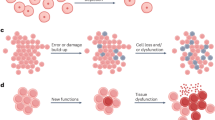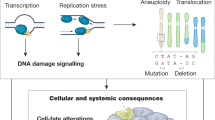Abstract
It is now increasingly realized that the underlying mechanisms which govern aging is a complex interplay of genetic regulation and damage accumulation. Aging as a result of accumulation of ‘faults’ on cellular and molecular levels, has been proposed in the damage (fault)-accumulation theory by Kirkwood 2006. However, this theory fails to explain some aging phenotypes such as fibrosis and premature aging, since terms such as ‘damage’ and ‘fault’ are not specified. Therefore we introduce here a specification of the underlying mechanism and arrive at a novel theory: aging of the body is a result of the accumulation of Misrepair of tissue. It emphasizes: a) it is Misrepair, not the original damage, that accumulates and leads to aging; and b) aging can occur at different levels, however aging of the body takes place at least on the tissue level, but not necessarily on cellular/molecular level. The novel concept of Misrepair which is introduced here unifies the understanding of the roles of environmental damage, repair, gene regulation, and multicellular structure in the aging process. The Misrepair-accumulation theory which is introduced here gives also explanations for the aging phenotypes, premature aging, and the difference of longevity in different species and is consistent with the point of view of physical theory of complex systems.
Similar content being viewed by others
Article PDF
Author information
Authors and Affiliations
Corresponding author
Rights and permissions
About this article
Cite this article
Wang, J., Michelitsch, T., Wunderlin, A. et al. Aging as a consequence of misrepair -- A novel theory of aging. Nat Prec (2009). https://doi.org/10.1038/npre.2009.2988.1
Received:
Accepted:
Published:
DOI: https://doi.org/10.1038/npre.2009.2988.1



